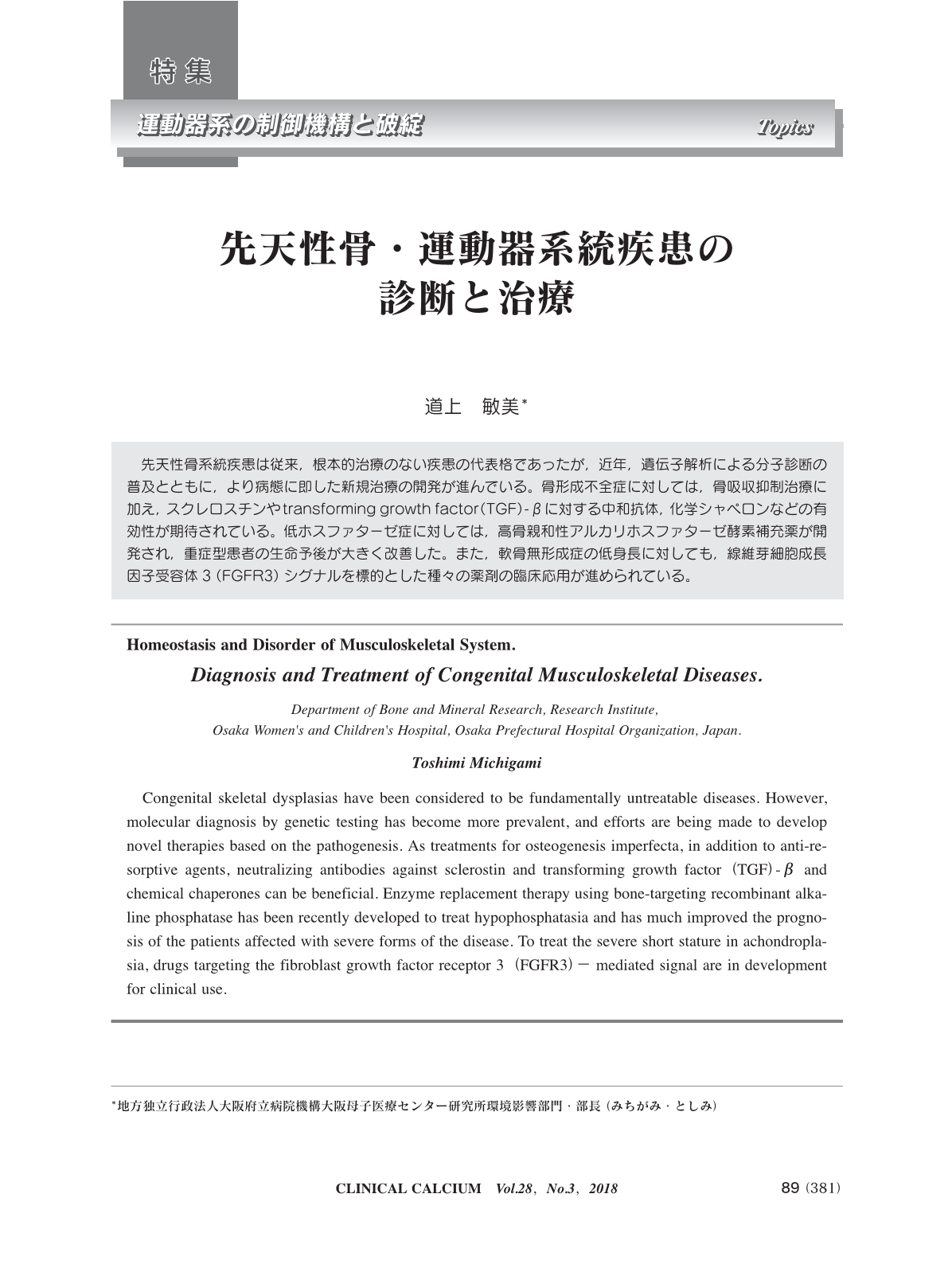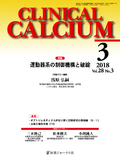Japanese
English
- 有料閲覧
- Abstract 文献概要
- 1ページ目 Look Inside
- 参考文献 Reference
先天性骨系統疾患は従来,根本的治療のない疾患の代表格であったが,近年,遺伝子解析による分子診断の普及とともに,より病態に即した新規治療の開発が進んでいる。骨形成不全症に対しては,骨吸収抑制治療に加え,スクレロスチンやtransforming growth factor(TGF)-βに対する中和抗体,化学シャペロンなどの有効性が期待されている。低ホスファターゼ症に対しては,高骨親和性アルカリホスファターゼ酵素補充薬が開発され,重症型患者の生命予後が大きく改善した。また,軟骨無形成症の低身長に対しても,線維芽細胞成長因子受容体3(FGFR3)シグナルを標的とした種々の薬剤の臨床応用が進められている。
Congenital skeletal dysplasias have been considered to be fundamentally untreatable diseases. However, molecular diagnosis by genetic testing has become more prevalent, and efforts are being made to develop novel therapies based on the pathogenesis. As treatments for osteogenesis imperfecta, in addition to anti-resorptive agents, neutralizing antibodies against sclerostin and transforming growth factor(TGF)-β and chemical chaperones can be beneficial. Enzyme replacement therapy using bone-targeting recombinant alkaline phosphatase has been recently developed to treat hypophosphatasia and has much improved the prognosis of the patients affected with severe forms of the disease. To treat the severe short stature in achondroplasia, drugs targeting the fibroblast growth factor receptor 3(FGFR3)-mediated signal are in development for clinical use.



